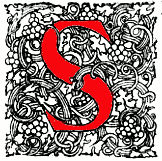
cotland was home to a slew of minor printer-publishers, mostly active in the areas of theology, science and medicine, history, travel literature, reference works, and in one case, art books. Significant literary writings seem not to have emerged from those houses. Among them, the following were particularly active and enjoyed a considerable reputation.
A. & C. Black (Edinburgh) 1807
Founded in Edinburgh by Adam Black (aged 23 at the time) and Charles Black, the company moved to London in 1889 and was taken over by Bloomsbury Publishing in 2001. It is best known for putting out the 3rd through 9th editions (1827-1903) of the Encyclopaedia Britannica, the brainchild of Andrew Bell and Colin Macfarquhar, who, with the help of editor William Smellie, published the first edition in Edinburgh in 1771. A. & C. Black acquired the rights to the Britannica in 1827. The Blacks also published a large series of travel guide books (especially to various parts of France), beginning in 1839; the annual Who’s Who, beginning in 1849; other reference works, such as Black’s Medical Dictionary; some important new scholarly works, such as Frazer’s Totemism (1887); and a number of practical “how-to” manuals. Having paid £27,000 for the copyrights and stocks of all Walter Scott’s works, the company energetically promoted the production of Scott editions (and made a fortune from them), and in 1902 it became the publisher of the immensely popular P.G. Wodehouse. Still, compared with Millar, Strahan, Foulis, or Bell & Bradfute, it was not a significant publisher of new works of literature. Its reputation rested on books of a more general character, science and medicine, theology, history, economics, sports, travel and guide books, school books and books for young people.
Oliver and Boyd (Edinburgh) 1807

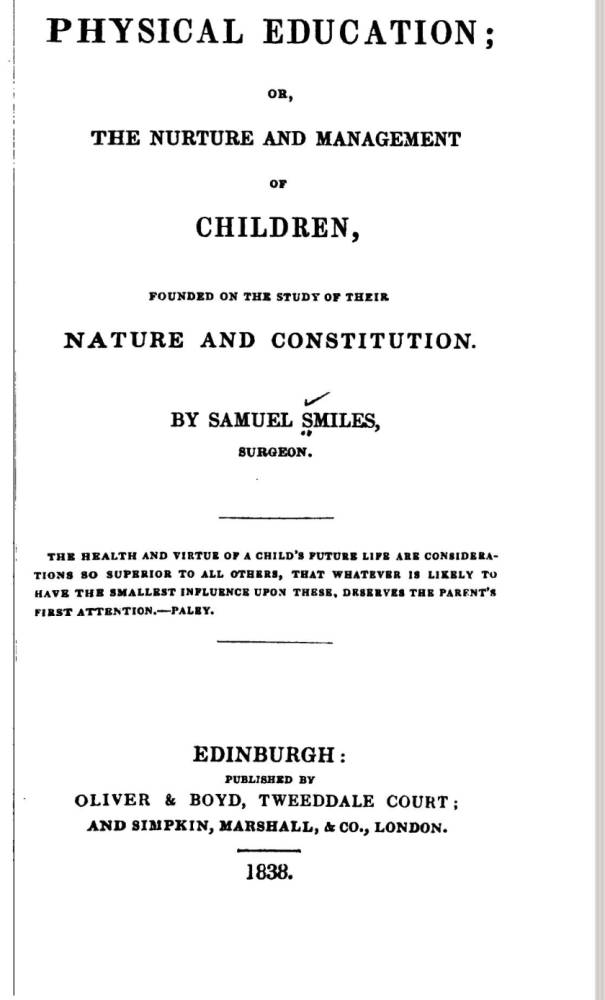

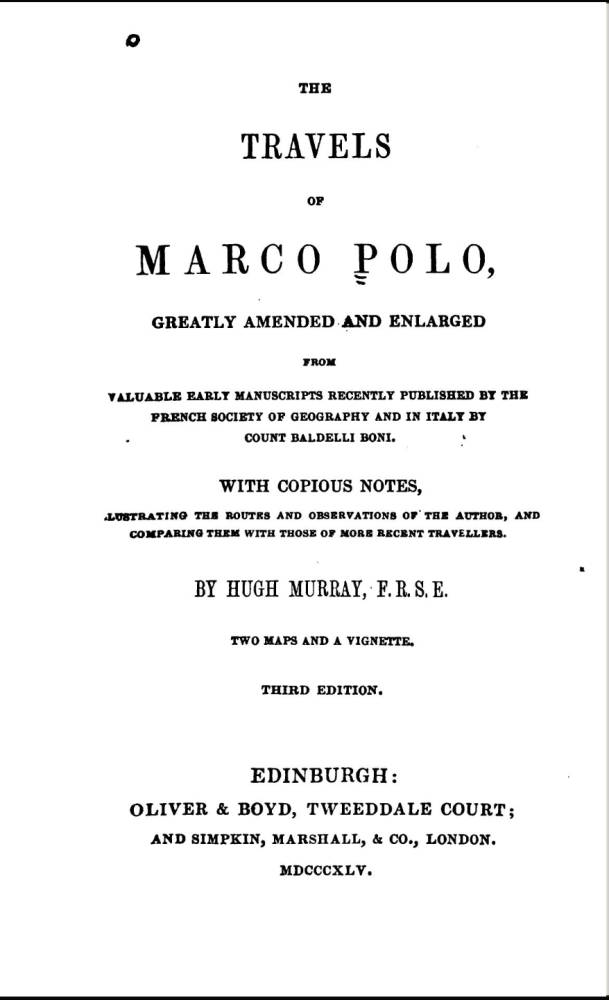
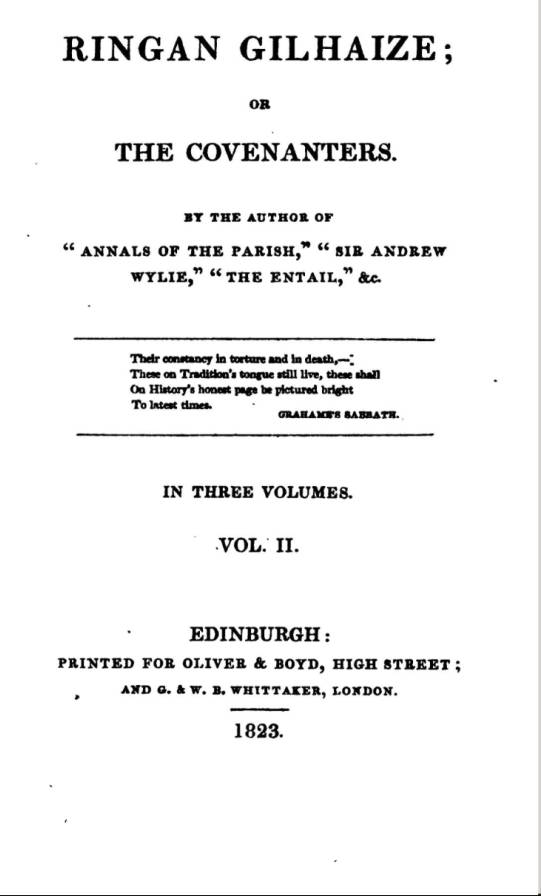
A Sample of Oliver & Boyd title-pages from books made available online by the Internet Archive. [Click on images to enlarge them.]
Thomas Oliver (1776-1853) and George Boyd (d. 1843) published an edition of the Poetical Works of Robert Burns in 1814; collections of “favourite songs” along with their musical scores (The Scottish Minstrelsy, 1814, and the English Minstrelsy, 1815); The Naval Syren, or The Cabin-Boy: Choice Sea Songs (1815-36); Oliver Cromwell, A Poem in Three Books by John Dunlop, poet, merchant and sometime Lord Provost of Glasgow; guide-books to various parts of Scotland in the 1860s; many books and pamphlets featuring up-to-date medical research; as well as teaching texts, such as A History of English Literature for the use of schools and of private students (1872); and a few reprints, as of Goldsmith’s History of the Earth (1830) and History of Rome (1843). A pioneer of mass printing, Oliver and Boyd cannot be said to have been active in promoting new literary writing.
James MacLehose (Glasgow) 1838
The son of a weaver in Govan, then an independent burgh, now a district in Glasgow’s South Side, MacLehose opened a bookstore in Glasgow in 1838. He was a close friend of the Macmillan brothers, helped them in the early stages of their career, continued to be consulted by them after they had established themselves as significant publishers in Cambridge and London, and occasionally co-published with them. Appointed bookseller to Glasgow University in 1864 and University Printer and Publisher in 1871, MacLehose chiefly published works on medicine, nursing, philosophy, religion, and law, many of them by professors at the University. In addition, however, he brought out an occasional novel (e.g. Effie Ogilvie, The Story of a Young Life by the popular Scots-born novelist Mrs. Oliphant, co-published with Macmillan, 1886), some translations (e.g. of the French classical poet Boileau Despréaux), and quite a few volumes of poetry, some in the Scots dialect. Virtually all the MacLehose literary authors were Scots and have not entered the English literature canon, although, to the present writer’s surprise, there have been recent reprints of several of the volumes of poetry. Among the literary works put out by MacLehose, the following, in English, are worth noting: Dan Daisy, or The Lady and the Sweep (1850), a long poem with no author’s name; William John Macquorn Rankine (Professor of Civil Engineering at Glasgow University), Songs and Fables (1874), including the witty poems “The Mathematician in Love” and “The Three Foot Rule” (https://mypoeticside.com/poets/william-john-macquorn-rankine-poems); John Nichol (Professor of English at Glasgow University), Hannibal: A Historical Drama in iambic pentameters (co-published with Macmillan, 1873) and The Death of Themistocles, a Dramatic Fragment, and other Poems (likewise in iambic pentameters, co-published with Macmillan, and including among the poems a striking tribute to Abraham Lincoln, 1881); C. J. Ballingball Birrell, The Two Queens: A Drama, also in iambic pentameters (1889); Willliam Freeland, A Birth Song and other Poems (1882); Archibald Hamilton Graham, Poems (1874) David Gray, The Luggie and other Poems (1886, a long poem originally published by Macmillan in 1862); James Hedderwick, The Villa by the Sea and other Poems (1881); David Buchanan, Man and the Years and other Poems (1895; some in light Scots dialect). In Scots, the most notable volume was the posthumously published collection of poems by the working-class woman poet Janet Hamilton, Poems, Essays and Sketches (1880).
Gowans and Gray (Glasgow) 1846
This unusual firm was founded by Adam Gowans in 1846 as a printing and bookbinding business and continued by his son Charles Gowans in partnership with Adam’s son-in-law James Gray. The firm ran into financial difficulties in the 1880s and after the death of Charles, the partnership with Gray appears to have been dissolved, though the firm continued to operate as Gowans and Gray. It was located at 22 Ann Street and then 58 Cadogan Street in Glasgow, and by 1908 a London branch had been opened at Robert Street, Adelphi (The Bookseller, October 9, 1888, and January 24, 1908). The images of the title-pages below state the firm’s address as 5, Robert Street, and Dominic Lane, who owns several works published by Gowans and Gray, writes with the information that one of them states the place of publication as 5, Robert Street while another has 35, Leicester Square.
The impetus for moving the original firm into publishing and for its pursuit of a distinctive publishing agenda appears to have come from its later owner and director Adam Luke Gowans (1871-1958). Unlike many founders of Scottish publishing houses, Gowans was well educated, having graduated with an M.A. degree from Glasgow University in 1895 and in 1944 being appointed head librarian of the world-renowned Glasgow School of Art, the first person from outside the School’s ranks to occupy that position. While we have been mostly, although not exclusively concerned hitherto with the eighteenth- and nineteenth-century contributions of Scottish publishers, Gowans and Gray made its impact in the early years of the twentieth century, the heyday of the Glasgow Style in the arts and of the city in general. Among Scottish publishers, it was unusual in its emphasis on the visual arts. However, it shared with firms like Blackie, Collins, and Nelson a policy of reaching out to a very wide market and thus, while keeping an eye on commercial advantage, contributing to the spread of culture among the middle and lower middle classes.
Under Adam Luke Gowans the firm was active in five main areas: inexpensive art books intended to be within reach of a broad upper working-class to middle-class public – the first Scottish publisher to win an international reputation in this area; contemporary Scottish poets and playwrights, together with some classics; translations of or books about foreign writers (French, German, and Spanish, but also Japanese); illustrated natural history books; and widely imitated – both in Britain and abroad -- anthologies of poetry and short stories selected by Gowans himself.


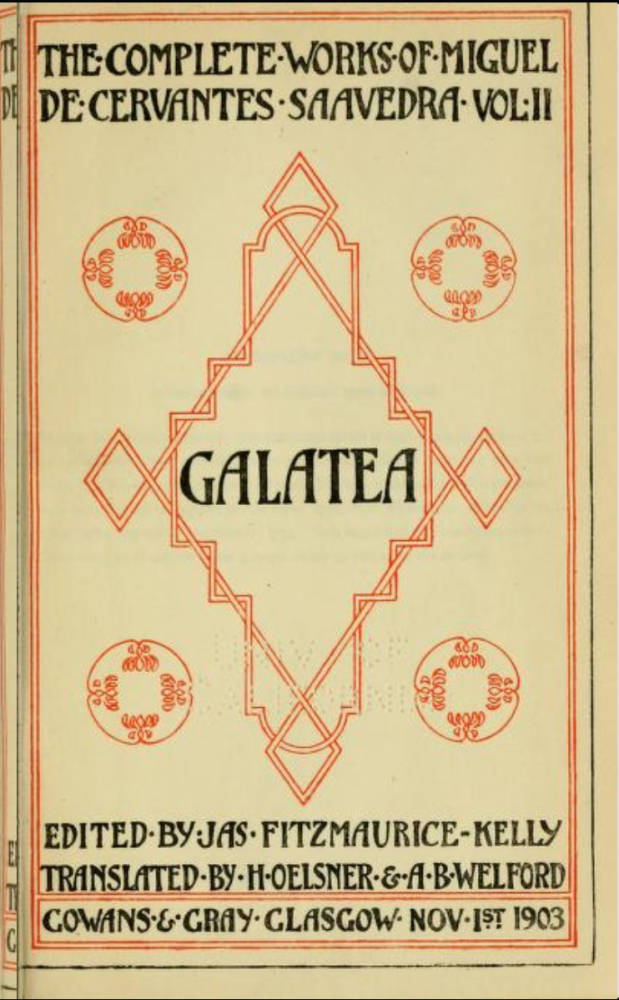
Left: . Middle: . Right: . [Click on images to enlarge them.]
Begun in 1904, the impressive series of “Gowans’s Art Books,” each devoted to a major European artist, from the Renaissance to the nineteenth century, and containing 60 black and white photographic reproductions of the works of the painter in question (by established photographers, such as the German painter and photographer Franz Hanfstaengl and the Frenchmen Jacques-Ernest Bulloz and Adolphe Giraudon) already encompassed 52 volumes by 1912, with more on the way. The first volumes were devoted to Rubens, Van Dyck, Rembrandt, and Raphael, but the series went on to include many other Renaissance, baroque, and early eighteenth-century artists as well as some later artists, such as Ingres, Constable, and Dante Gabriel Rossetti. They were sold at the incredibly low price of sixpence each with “pretty” parchment covers, one shilling for cloth-bound copies and two shillings for leather-bound copies. There was no text, only a few advertisements for other Gowans and Gray publications, for art magazines (such as The Connoisseur), and for the odd art dealer. A listing of booksellers abroad from whom volumes in the series could be purchased gives some idea of the potential range of sales. They include booksellers in France, Belgium, Germany, Holland (4), Italy (8), Portugal, Switzerland, Sweden, Canada, India, and the U.SA. Frequent reprints and new editions of virtually all the volumes testify to their popularity. Thus no. 1, on Rubens, published in 1904, had one reprinting in 1904, three in 1905, two in 1906 and two in 1907. A new edition, based on new plates, was issued in December 1907 and already had to be reprinted in February 1908. The editor of a 1917 Cambridge University Press edition of Hazlitt’s Selected Essays recommended, in his introduction to the essay “On a Landscape of Nicolas Poussin” that the reader acquire volume 23 of Gowan’s Art Books: “A little sixpenny volume containing sixty reproductions of Poussin’s paintings can be obtained (Gowans and Gray publisher) and should be used by the reader in illustration of this essay” (p. 219).
A companion 5-volume series of “Drawings from the Old Masters,” initiated in 1906 and produced along similar lines (60 reproductions in each at a cost of sixpence for the parchment bound version), was devoted to works from the Albertina in Vienna; to Japanese prints in the British Museum, selected by the poet and scholar Laurence Binyon; to Dutch and Flemish drawings in the State Museum, Amsterdam; to “Famous Artists” in the British Museum, London; and to drawings by Claude Lorrain in the British Museum, London, again selected by Laurence Binyon. The prolific German art historian Georg Gronau edited a volume of Masterpieces of Sculpture from the earliest times to the present day (again at a cost of sixpence for the parchment bound version). Gowans also issued reproductions of individual art works, sometimes arranged in a series, as in the case of Modern German Artists: One Hundred Masters of the Present Day (1906). This was published in twenty parts, and as the reproductions were in colour, the price was considerably higher -- two shillings for each part or forty-two shillings for the complete set, bound in a single gilt-edged volume. According to Gowans’s own advertisement in The Connoisseur for September 1905, Modern German Artists “contains what are, beyond all dispute, the best examples of colour reproduction yet issued.”
Gowans’s enthusiastic love of the visual arts led him to employ the well-known and prolific Glasgow School artist Jessie M. King to illustrate many of his publications: notably Our Trees and How to Know Them (1908), one of 20 accessible volumes in the series of “Nature Books,” consisting of 1: Wild Birds at Home; 2: Wild Flowers; 3: Wild Flowers (second series); 4: Butterflies and Moths; 5: Wild Birds; 6: Freshwater Fishes; 7: Toadstools; 8: Our Trees and How to Know Them 9: Wild Flowers (third series); 10: Life in the Antarctic; 11: Reptile Life; 12: Sea-shore life; 13: Birds at the Zoo; 14: Animals at the Zoo; 15: Some moths and butterflies and their Eggs; 16: Wild Flowers (fourth series); 17: British Mammoths; 18:Pond and Stream Life; 19: Wild Birds (third series); 20: Alpine Plants (first series); 22: Alpine Plants (second series). No. 21 in the series never appeared.
Jessie King also provided illustrations for Edmé Arcambeau’s The Book of Bridges, about the bridges in Paris (1911), The Death of Tintagiles (1909), Alladine and Palomides (1911), and The Intruder (1913), plays and puppet plays by Maeterlinck in English translation in the series known as “Gowan’s International Library.” In addition, over the three decades of their association Gowans commissioned King to create books consisting entirely of her own drawings: Budding Life: A Book of Flowers (1908), Dwellings of an Old World Town, on the architecture of the ancient, still unspoiled town of Culross in Fife (1909), and Kirkcudbright, A Royal Burgh (1934).
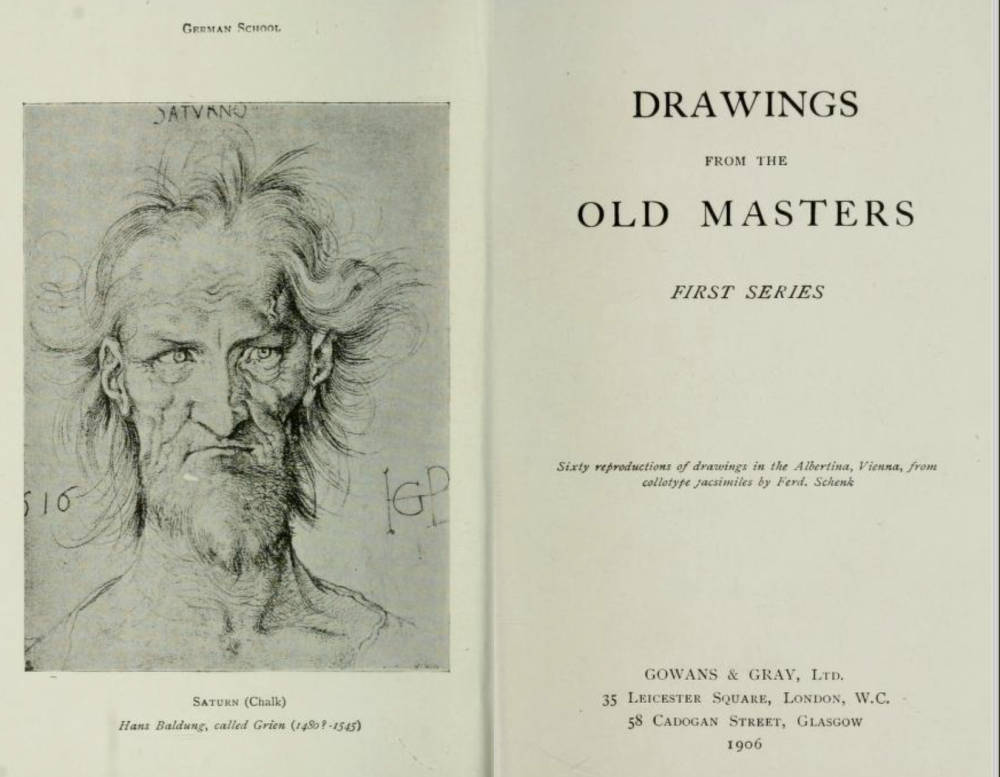
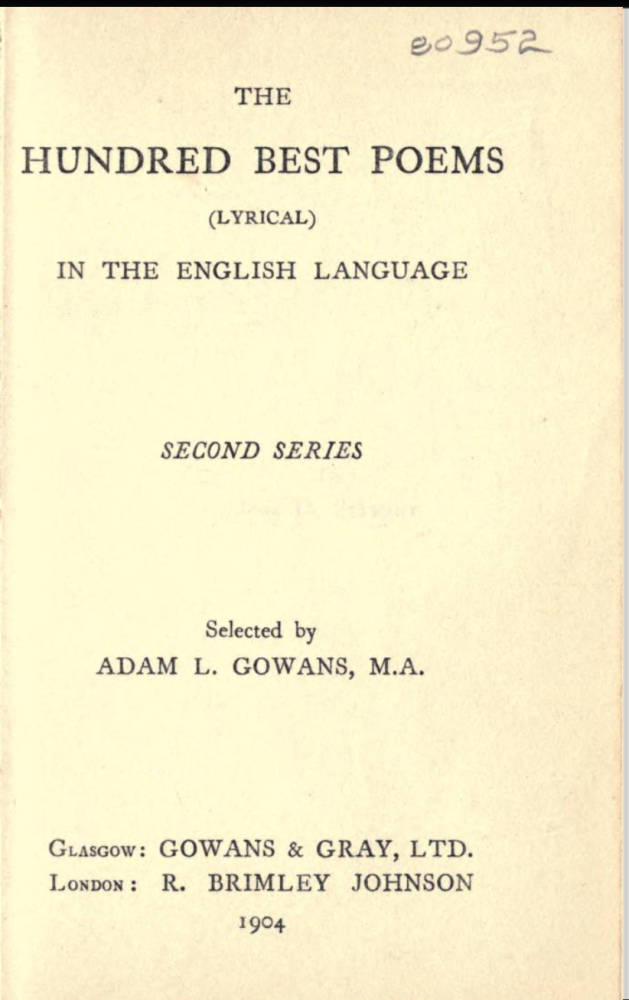

Among the major modern British writers published or republished by Gowans and Gray in the early years of the twentieth century we find The Complete Works of Keats in five volumes (1900-1901) and, in the inexpensive sixpenny “Gowans’s International Library,” The Haunted and the Haunters (1906) and the play The Lady of Lyons (1907) by Bulwer Lytton, Goblin Market and Other Poems by Christina Rossetti (1907, a reprint of the 1862 first edition), and The King of the Golden River and other stories by John Ruskin (1907); among French writers in the series: an English translation of the contemporary playwright Maurice Maeterlinck’s Interior (1908), in addition to the three plays by the Belgian writer already mentioned, and Dumas Père’s play The Tower of Nesle, in an English translation by Adam Gowans himself (1906), Le Cid of Corneille (1908), Les Chefs d’Oeuvre poétiques de Ronsard et de son École, containing “all the very best poems of the Pleïade”(1907), Les Chefs d’Oeuvre lyriques d’André Chénier (1907), and Les Chefs d’Oeuvre lyriques d’Alfred de Musset (1907), all in the original French, selected and edited by the contemporary French poet and critic Auguste Dorchain (1857-1930). German literature was represented by Theodor Storm’s popular Immensee, already brought out by Gowans and Gray in a new translation in 1896 and by the same writer’s tales Eekenhof and Zur Chronik von Grieshuus (both 1908), Arthur Schnitzler’s puppet play of 1862 Gallant Cassian (Der tapfere Cassian), translated by Adam Gowans himself and published in 1914, and by E.T.A. Hoffmann’s Mademoiselle de Scudéry (1908); Spanish literature by seven volumes out of a projected twelve-volume edition of the Complete Works of Cervantes (1901-1903), by James Fitzmaurice Kelly’s Taylorian lecture on Lope de Vega and the Spanish Drama (1902), and by Hugo Albert Rennert’s Life of Lope de Vega (1904). The range of Gowans and Gray’s translations extended beyond Europe, however, above all – understandably in light of the current keen European interest in Japanese art – to Japan. The important early 13th century Japanese classic Ho-jo-ki, Notes from a Ten Feet Hut, advertised as “a famous Japanese classic,” appeared with Gowans and Gray in 1907, as no. 15 of Gowans’s International Library series and the same year saw the publication of Japanese Fairy Tales told in English by Basil Hall Chamberlain as no. 13 of the series. A reissue of Frederick Victor Dickins’ 1870 translation (the first) of the classic eighteenth-century puppet play Chiushingura by Takeda Izumo and others came out in 1910 subtitled A Japanese Romance; the following year saw the publication of A Captive of Love, “a quaint and charming native Japanese novel” in the words of the Preface, by the late eighteenth- to early nineteenth-century writer Kyokutei Bakin; this in turn was followed in 1912 by Dickins’ translation of Rokujiuyen’s The Story of a Hida Craftsman, with Hokusai´s illustrations in reduced facsimile. China was less well represented: Chinese Fairy Tales told in English by Herbert A. Giles appeared in 1911, as no. 38 of Gowans’s International Library.
Probably the most influential of the Gowans and Gray publications, along with “Gowans’s Art Books,” were the firm’s many anthologies of poetry and prose, classic and contemporary, mostly put together by Gowans himself and often presented as “The Hundred Best” in any genre. The following select list, arranged chronologically, will give some idea of the extent of this publishing programme.
The Hundred Best Poems (Lyrical) in the English language, 1903. (37 editions down to 2010; held by 69 libraries worldwide)
The Hundred Best English Poems, 1904 (7 editions between 1904 and 2007, held by 85 libraries worldwide and featuring work by Arnold, Browning, Burns, Byron, Campbell, Coleridge, Cowper, Dryden, Goldsmith, Gray, Herbert, Herrick, Hood, Jonson, Keats, Lamb, Milton, Pope, Shakespeare, Shelley, Southey, Stevenson, Tennyson and Wordsworth, among others)
The Book of Love: One Hundred of the Best Love Poems in the English Language, 1905 (4 editions between 1905 and 1914, held by 12 libraries worldwide)
The Hundred Best Blank Verse Passages in the English Language, 1905 (11 editions between 1905 and 2012 and held by 24 libraries worldwide.
The Hundred Best Poems (Lyrical) in the Latin Language, 1905 and still being republished in 2018 (selected not by Gowans but by fellow-Scot and President of the British Academy John William Mackail)
A Treasury of English Verse, 1906 (6 editions between 1906 and 1928, held by 12 libraries worldwide) A different selection from The Hundred Best English Poets.
Poetry for Children. One Hundred of the Best Poems for the Young in the English Language, 1906 (7 editions between 1906 and 1918, held by 11 libraries worldwide.
Lyric Masterpieces by Living Authors, 1908 (11 editions between 1908 and 1916, held by 27 libraries worldwide)
Passages from the Hundred Best English Prose Writers, 1910 (held by 21 libraries worldwide)
A Second Hundred of the Best Poems (Lyrical) in the English Language, 1910 (8 editions between 1910 and 1920, held by 15 libraries worldwide)
Famous Ghost Stories by English Authors, 1910 (9 editions between 1910 and 1920, held by 43 libraries worldwide)
The Twelve Best Tales by English Writers, 1911 (held by 31 libraries worldwide)
The Twelve Best Short Stories in the English Language, 1912 (9 editions published between 1912 and 1930, held by 30 libraries worldwide.
In a couple of prefaces, Adam Gowans explained what he hoped his carefully compiled anthologies would achieve. “It is the hope of the compiler,” he wrote in the Preface to A Treasury of English Verse, “that this volume of poetry will become a favourite House-book, as the Germans call it, a book in which every member of the family will find some verses he loves, a book containing poems that will be read aloud by parents to children, by lover to lass, by friend to friend. It follows the course of life from its beginning to its end, showing its ups and downs as they have been reflected in the mirrors that great poets have held up to it. Nothing that is not good literature finds a place here; the book is intended to stimulate a taste for the best poetry in those who have never learned to love it and to revive it in those who have always loved it but have neglected it awhile.” Similar sentiments are expressed in the Preface to Lyric Masterpieces by Living Authors, in which Gowans also deplores the copyright laws that make it difficult and, at the very least, expensive for the publisher to connect readers of limited means with the leading literary figures of their own time:
So far as I know, no attempt has yet been made to publish an anthology confined to the verse of contemporary writers at so low a price [i.e. still the standard sixpence –L.G.]; I hope, therefore, that this book will attract many readers of poetry, whom the comparatively high price at which the works of most living poets are published has hitherto kept aloof.[ . . .] I am of course sorry that I have been unable to obtain permission to include any of Mr. Swinburne’s short lyrics, or of Professor A.E. Housman’s. Still, a volume containing poems by Arthur Symons, Yeats, and Robert Bridges must afford considerable compensation.
Gowans goes on to contrast the situation in Britain, where “the expense of getting up even so small a book consisting entirely of copyright matter is a heavy one” with the situation in Germany where “it is not the custom to make any charge for such permissions,” thus allowing the publisher Reclam “to publish for a shilling a volume of modern lyrics of 500 pages, in which no contemporary poet of any note is unrepresented,” with the result that the German public is far more familiar with living German writers, such as Liliencron, Dehmel and Bierbaum (Gowans too is obviously familiar with the German literary scene), than the British public is with its contemporary writers.
In Gowans’s aim of making good literature, including contemporary work, accessible to a broad public, and thereby enhancing the culture and quality of life of ordinary people, it is once again not difficult to discern the same project that, as we have repeatedly had occasion to observe, animated other Scottish publishers such as Blackie, Nelson, and Collins, and even Constable and Macmillan. Gowans’s range was unusually wide, however, extending beyond English and even European literature and expanding the field to include the visual arts. In this respect Gowans probably reflects his time – the heyday of the then dynamic international trading and industrial city of Glasgow in general and of the internationally admired “Glasgow style” in the arts and architecture in particular.
In addition, it should be noted that Gowans’s popularising project had considerable influence beyond Scotland and Britain. In France, the poet and critic Auguste Dorchain, who had edited volumes in French for Gowans and Gray, put out Les cent meillleurs poèmes (lyriques) de la langue française in 1905; in Italy, Luigi Ricci edited Le Cento Migliori Poesie (Liriche) de la Lingua Italiana in 1907; in Spain, Marcelino Menendez Pelayo, the director of the National Library, published Las cien mejores poesías líricas de la lengua castellana in 1908; in Portugal, Carolina Michaëlis de Vasconcelos prepared As Cem Melhores Poesias (Líricas) da Lingua Portuguesa for publication in Lisbon in 1910; in Germany Richard Moritz Meyer’s edition of Die Hundert besten Gedichte der deutschen Sprache (Lyrik) appeared in 1909, followed in 1913 by Die Hundert besten Gedichte der deutschen Sprache (Epik) in 1913. In Holland, the Dutch poet and critic Albert Verwey brought out De Honderd Beste Gedichten (Lyriek) in de Nederlandsche Taal. The “Hundred Best” formula was carried still further in Spain in 1918 with the publication of Las cien mejores poesías líricas de la lengua francesa, Las cien mejores poesías líricas de la lengua inglesa and Las cien mejores poesías líricas de la lengua portuguesa (de Baubeta, pp. 57-63).
Gowans and Gray does not belong among the major Scottish publishing houses that we have described hitherto. It was smaller, but its distinctive character, directly reflective of the ideas and interests – especially in the visual arts -- of its owner and chief editor, Adam Luke Gowans, would seem to warrant the relatively lengthy treatment it has been accorded here.
With Gowans and Gray we come to the end of our list of Scots, often of modest origin, who founded enormously influential publishing houses sometimes in their native cities of Edinburgh and Glasgow, sometimes in London itself. The number and influence of these publishing houses seems out of all proportion to the relative wealth and population of eighteenth and even nineteenth-century Scotland. Their existence, success, and contribution to the development of English literature demonstrate the advantage, to both countries, of the Union that brought them together after centuries of rivalry and warfare – an advantage worth pondering in the current age of growing separatist and anti-union sentiment not only in Great Britain but in many parts of the world.
Spreading the Word: Scottish Publishers and English Literature 1750-1900
- Scotland and the Modern World: Literacy and Libraries
- Scottish Publishers, London Booksellers, and Copyright Law
- Andrew Millar (London) 1728
- William Strahan (London) 1738
- Robert and Andrew Foulis, The Foulis Press (Glasgow) 1741
- John Murray (London) 1768
- Bell & Bradfute (Edinburgh) 1778
- Archibald Constable (Edinburgh) 1798
- Thomas Nelson and Sons (Edinburgh) 1798
- John Ballantyne (Edinburgh) 1808
- William Blackwood (Edinburgh) 1810
- Smith, Elder & Co. (London) 1816
- William Collins (Glasgow) 1819
- Blackie and Son (Glasgow) 1831
- W.& R. Chambers (Edinburgh) 1832
- Macmillan (Cambridge and London) 1843
- Lesser Publishers
- Eighteenth- and Nineteenth-century British Copyright Law: A Bibliography
Bibliography
Cohen, Aaron M. . “The horizontal Chushingura,” in Revenge Drama in European Renaissance and Japanese Theatre. Ed. Kevin J. Wetman. New York and Basingstoke, England: Palgrave Macmillan, 2008.
Odber de Baubeta, Patricia Anne. The Anthology in Portugal. Oxford, Bern, Berlin, etc.: Peter Lang, 2007. Pp. 57-63.
Last modified 8 December 2020